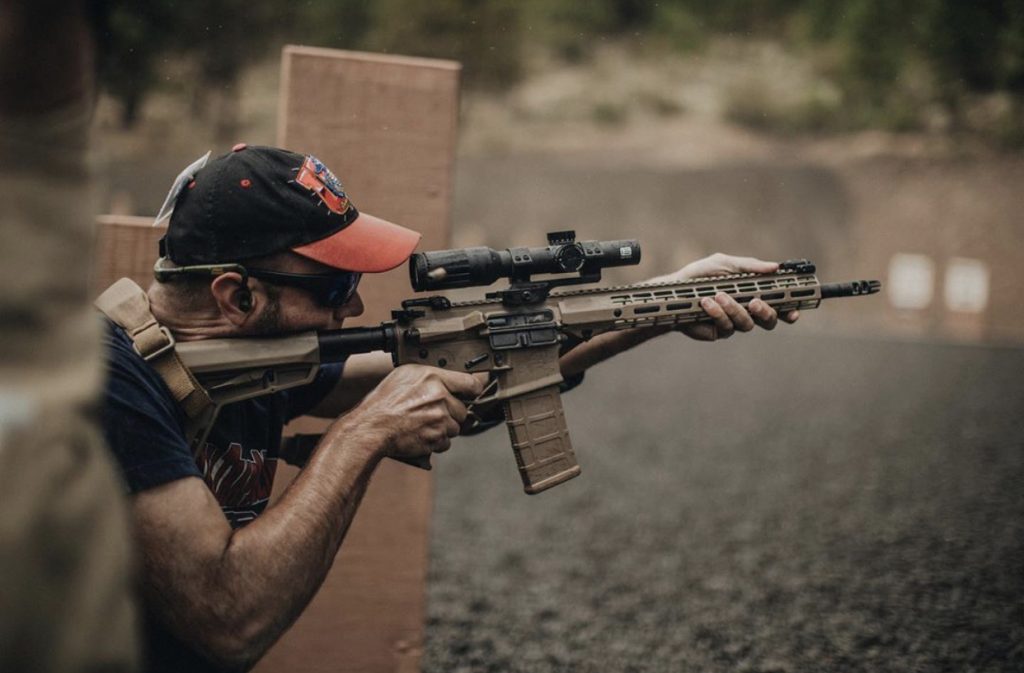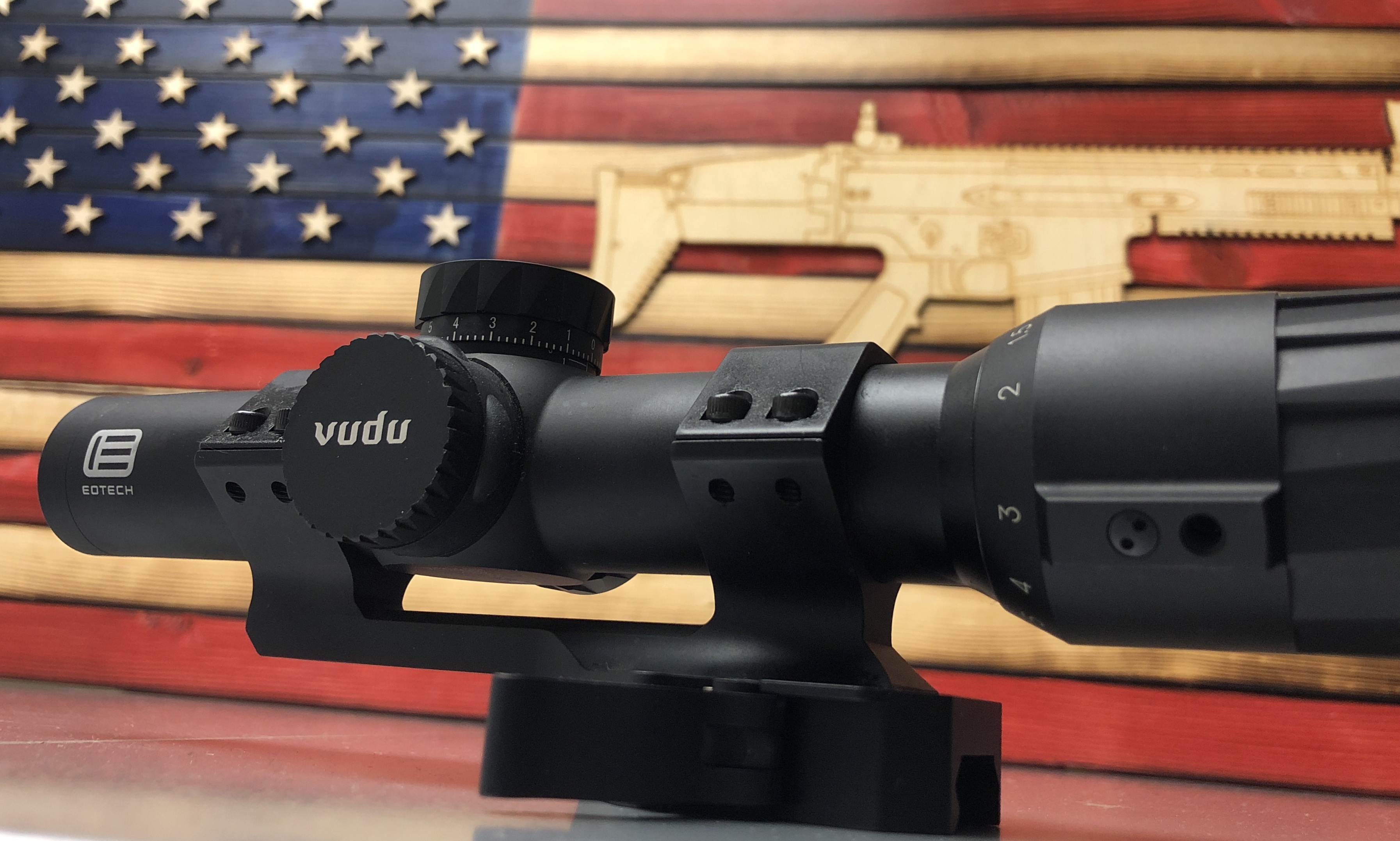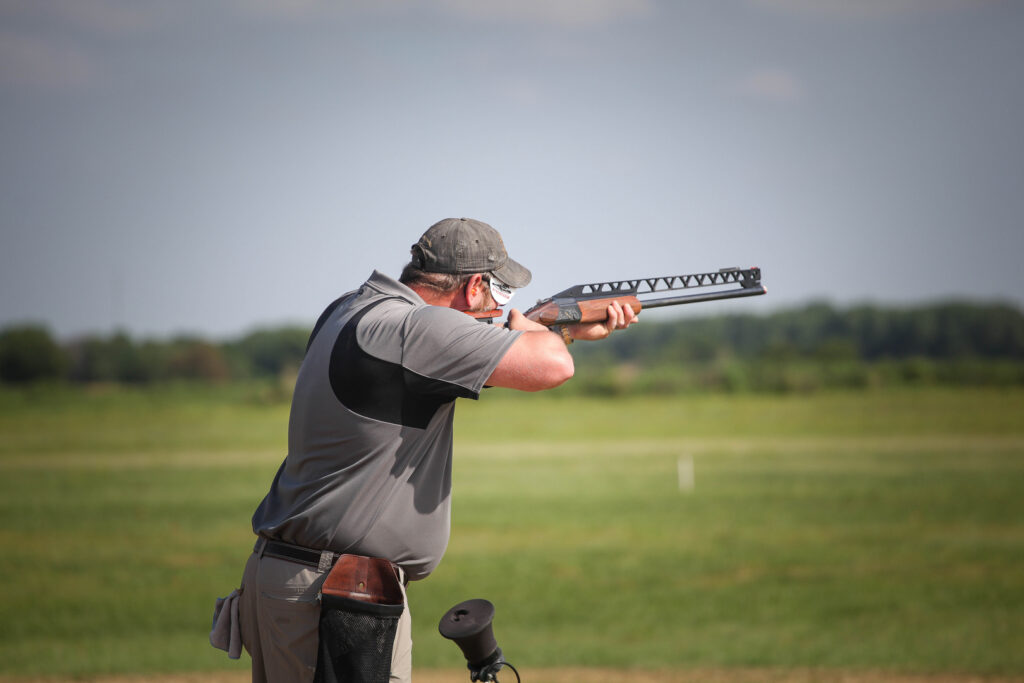Credit where credit is due. The VUDU cast the spell, or broke the curse, or hexed my mind into finally taking the LPVO plunge. My ACOG exclusive fandom of magnified “combat” optics was put to rest and I began running a 1-6x. I tricked myself and what a treat (yes, Halloween puns, deal with it) to appreciate the LPVO.
I owe it to EOTech and the VUDU

The VUDU line has several offerings, most geared towards precision shooting or hunting, but for their 1-6x they had two specific goals.
Advertisement — Continue Reading Below
Goal 1. Produce a high value low power variable optic that could compete in the high tier field against optics like the Vortex Razor Gen II
Goal 2. Make it have the signature EOTech reticle.
Goal 2 is why they made the VUDU 1-6 a Front Focal Plane optic. Throw every argument or thought about precision and reticle scaling and all the other bits into the secondary reason pile, they did it first and foremost to keep the reticle.
Advertisement — Continue Reading Below
I admire that. Sometimes you must do it for the lulz. B&T named a 9mm PCC just to throw shade at other 9mm PCCs. These little insider nods and quips are some of my personal entertainment each day, like the Disney easter eggs in movies.
VUDU SR-1

Now, goal 2 given its due appreciation, the VUDU is a well engineered optic in its own right, meeting goal 1.
Advertisement — Continue Reading Below
It’s greatest feature, in my opinion, is the full erector adjustment and ocular lens housing. Having the full assembly make the zoom adjustment instead of a narrow ring lends itself handily to quicker motor movements. Need zoom? Grab and turn. Need to go back to 1x? Grab and turn. An aluminum lever that threads into the assembly further increases the ease of adjustment.
Now, these levers are known to break. If hit with enough force, on a barricade for example, the lever snaps. This is part of the design. Why? Minimize transfer damage directly into the optic. A stronger steel lever has two critical flaws, the transfer damage and an annoying tendency to rust bind themselves into the scope. Aluminum with a safe break strength offered a solution for both. Getting the broken knob out was infinitely easier than unbinding a rusted in one due to moisture.
Front Focal Plane and Illumination
The VUDU has an illuminated reticle, in either the SR-1 Milliradian or the SR-2, SR-3 bullet drop reticles. EOTech did an excellent job of getting these usably bright but it isn’t holosight bright.
Advertisement — Continue Reading Below
It cannot be. FFP LPVOs have a limitation based on reticle design. I will summarize.
The reticle in a magnified optic is made in one of two ways, usually based on the focal plane of the scope. Manufacturers can use wire or etched glass.
A wire reticle is very easy to work with for simple designs and you can illuminate a wire reticle very brightly by powering it directly. Wire is thick though and works best on second focal plane scopes where the reticle isn’t scaled to all zoom levels.
Advertisement — Continue Reading Below
For front focal plane optics, that leaves etched glass.
Etched glass has the advantage being able to be made as finely and complex as the user wants. Horus reticles are an excellent example. The problem comes with illuminating them. The method of illumination is similar to a red dot. An LED is reflected off of the filling in the glass etching. That etching is really tiny. Unlike a red dot which has the whole coated lens to bounce off, the LED in an FFP optic has the miniscule percentage of coated surface area to shine perfectly back through the lens to aid the shooter’s eye. While the illumination might not look very bright at max power, the LED is blazing inside the scope doing its best.
Now back to the EOTech.
As a happy consequence of the VUDU using the classic EOTech reticle it illuminates very well, but the large etched ring is only usable at the lowest power, so they don’t have to keep the ring fine. The middle of the reticle, the tiny dot and crosshair, doesn’t come into play until higher magnification, where illumination isn’t nearly as important and bright illumination even less so.
Advertisement — Continue Reading Below
Illumination is primarily about quickly acquiring the sight for a shot. Secondarily it is about contrast against a target which requires a much finer and lighter degree of illumination, which FFP scopes can do very well.
The challenge comes in wanting an optic to do both. Because they are two different illumination purposes, going about it is two seperate power level problems. Designing a reticle that illuminates and functions well at 1x FFP makes it a thick beast at higher magnification and vice versa, a fine useable at high magnification reticle doesn’t have the surface area to illuminate well.
The VUDU strikes a happy balance, it has useable illumination at low magnification (although I would stop short of calling it daylight bright) and an excellent variable on the higher magnification for the simple milliradian crosshair.
Advertisement — Continue Reading Below
Power wise, magnified optics are hungrier than our red dots. The DoD solicitations are specifying hundreds of hours of battery endurance, not thousands. Batteries are cheap and plentiful and, unlike dot optics, the reticle doesn’t go away.
Overall
The VUDU stands well among its peer scopes with excellent glass, weight, controls, and the mount system EOtech sells is forgiving on setting eye relief without stealing a premium of your receiver top rail.
All for a combined MSRP of $1694
Advertisement — Continue Reading Below















